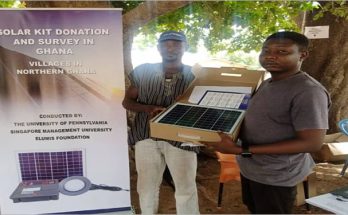 The Julius Nyerere Hydropower Project (JNHPP) will help increase the amount of electricity Available in East Africa.
The Julius Nyerere Hydropower Project (JNHPP) will help increase the amount of electricity Available in East Africa.
Ministers said that the 2,115MW, $2.9 billion project over the Rufiji River will revolutionize the region during the 16th Meeting of the Sectoral Council of Ministers on Energy, which took place in Arusha on February 13.
Aiming to connect Tanzania, Kenya, Uganda, and Zambia’s grids, the project is a component of Tanzania’s power master plan.
Minister of Water, Energy, and Minerals of Zanzibar Shaib Hassan Kaduara stated, “Energy plays a critical role in industrial development and investment promotion… and this project is a milestone that will reduce the deficit of electricity not only in Tanzania but in the entire region.”
According to the World Bank, in Sub-Saharan Africa, one in two individuals did not have access to electricity in 2023. Eleven percent of the world’s population, or over 800 million people, still lack access to consistent electricity, according to the International Energy Agency. Of them, 600 million reside in Sub-Saharan Africa, with 82 million of those being distributed among Kenya, Tanzania, and Uganda.
The goal of the partner nations’ reports at the sectoral meeting was to increase the amount of renewable energy that is added to national grids. Examples of this included investments in wind and solar energy infrastructure, such as Kenya’s wind and solar projects and Burundi’s solar mini networks.
At 4,811.2 MW, the region’s overall peak system demand is greater than its installed power supply capacity of 7,381.67 MW. Kenya and Burundi had the highest reported regional per capita energy consumptions, at 153 kWh and 25 kWh, respectively.
EAC Deputy Secretary-General Annette Ssemuwemba, who oversees trade, customs, and monetary affairs, stated, “As a region, we must focus on sufficient, reliable, and cost-effective energy to meet our development needs. In this regard, there is a need to come up with solutions that will guide the sector.”
Uganda stated that she is concentrating on the deployment of solar energy for rural electrification, whereas Rwanda and Tanzania reported higher investment in solar energy projects.
A connection of 1,058 kilometers connects the Ethiopian and Kenyan grids. An interconnector with Tanzania and a second line with Uganda will provide further regional connectivity. These initiatives will help to establish a regional electricity market.
Only Kenya has effectively established geothermal energy projects, according to the report’s evaluation of green energy initiatives. The potential of Kenya’s geothermal resources is projected to be 10,000 MW; however, as of right now, only 985 MW of existing capacity—roughly 30% of all installed capacity—have been utilized.
Installed green energy makes up more than 90% by dispatch and 78% (2,398 MW) of the 3,322 MW total generation capacity.



